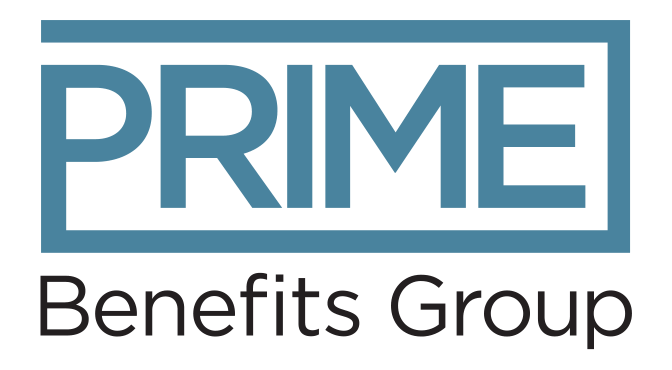- Have a question?
- 613-89-Prime (77463)
- 1-866-950-3667
- info@primebenefitsgroup.com
Why ‘People and Culture’ is the New Human Resources


The way we think about work – and how employers think about their teams – is changing dramatically. An HR revolution has been underway for decades, but we hadn’t seen such a noticeable shift towards a renewed acknowledgement of the pivotal role people play in business since the COVID-19 pandemic. People are becoming the focus, and top talent is more mobile than ever, prompting organizations to rethink how they approach employee engagement.
A growing number of Human Resources teams are embracing this change, transitioning from traditional HR roles to adopting the broader designation of ‘People and Culture’. The ultimate goal is to create departments where leaders aren’t just administrators but trusted executive partners and advocates for employee success.
Human Resources vs. People & Culture
People and Culture is considered a progressive approach, pivoting from being policy-driven to people-centric. The focus is no longer solely on processes and policies but on people. It acknowledges the shortcomings of compartmentalizing company culture and highlights its newfound status as a strategic priority. In the battle for top talent and critical need for Diversity, Equity, and Inclusion (DEI) in our workplaces, culture is just as critical as the bottom line.
The shift from HR to People and Culture signifies more than just a rebranding; it’s a recalibration of purpose and approach. Sage’s recent global research, ‘The Changing Face of HR’, paints a picture of this evolution. The majority (91%) of HR leaders surveyed say the profession has changed significantly over the last five years, yet only 39% believe employees know what HR does. Three quarters (73%) of HR leaders agree the term ‘Human Resources’ is outdated, deeming it a relic of the industrial age. It’s a language that can inadvertently dehumanize the very essence it aims to represent.
Another study found that 37% of employees believe HR is more interested in advocating for the company than for them. When it comes to concerns over culture or morale, and how leaders communicate with their teams, the survey suggested HR leaders are in the dark. This is a reminder that, while the shift to People and Culture is a step in the right direction, it requires a careful balance between strategy and genuine human connection. Understanding the intricacies of this transformation is key to harnessing its full power and potential.
The transition emphasizes inclusivity, recognizes organizations as entities comprised not merely of resources but of individuals with diverse backgrounds, perspectives, and contributions. This approach prioritizes the employee experience, acknowledging that a thriving organizational culture directly impacts employee satisfaction, engagement, and retention.
Pros and Cons
As more organizations embrace this evolution, it’s important to weigh the opportunities and potential challenges that come with this rebranding. A shift to People and Culture emphasizes a more human-centric approach, recognizing employees as unique individuals who can contribute to the company’s overall mission, values, and goals, in different ways. The shift also highlights the importance of organizational culture, and makes it a strategic priority – not just a perk.
Adopting ‘People and Culture’ is also often seen as a progressive move, signaling that the organization is evolving beyond traditional and transactional HR practices. In a modern workforce where HR isn’t often considered a ‘friend’, an evolution in services and approach could help rebuild trust. This transition, however, requires changes to existing processes, systems, and perhaps most significantly, mindsets. Clear communication is key, as employees need to understand that the new term encapsulates the functions of the HR department, and it’s not just a surface-level rebranding.
While a rebrand holds the potential for positive change, it also runs the risk of being perceived as superficial if it’s not accompanied by tangible shifts in practices. Resistance to change, particularly among long-time employees accustomed to traditional HR structures, may pose a challenge. The integration of this change calls for a communications strategy and changes to ensure that the transition to People and Culture authentically improves the overall employee experience.
How to Evolve
Here are a few things to keep in mind when considering a shift from Human Resources to People and Culture:
- Envision the End Goal: Start by gathering feedback from employees to understand their needs, concerns, and ideas. Use this input to create a transition plan and communication strategy to ensure the shift isn’t just timely but aligns with the evolving dynamics of your team.
- Prioritize Training & Growth: Invest in leadership training to provide your team with the skills necessary for building empathy, inclusivity, and contributing to a positive workplace culture. Leaders should be champions for the cultural shift and serve as role models for embracing a more human-centric approach.
- Create a Clear Communication Plan: Develop a strategy to explain the shift from HR to People and Culture, emphasizing the holistic nature of the change. Ensure employees understand the reason behind the shift, the benefits they’ll receive, and what the broader focus on culture and individual well-being will mean for them and the organization in the long run.
The Role of Benefits
Since People and Culture emphasizes a holistic approach to employee well-being, it’s important for benefits offerings to align with this approach by offering programs that address physical and mental and emotional well-being, such as wellness programs and mental health support.
Employee benefits should also reflect the prioritization of diversity and inclusivity, and cater to the needs of a diverse workforce. This may involve offering flexible work arrangements, family-friendly policies, and benefits that accommodate different lifestyles.
Benefits should not only reflect your company’s values but also contribute to a positive workplace culture. Contact us so we can work together to create strategies that work best for you and your team.
Suggested Reading
Why and How to Evolve from Human Resources to People and Culture
How HR Lost Employees’ Trust – and How to Get It Back